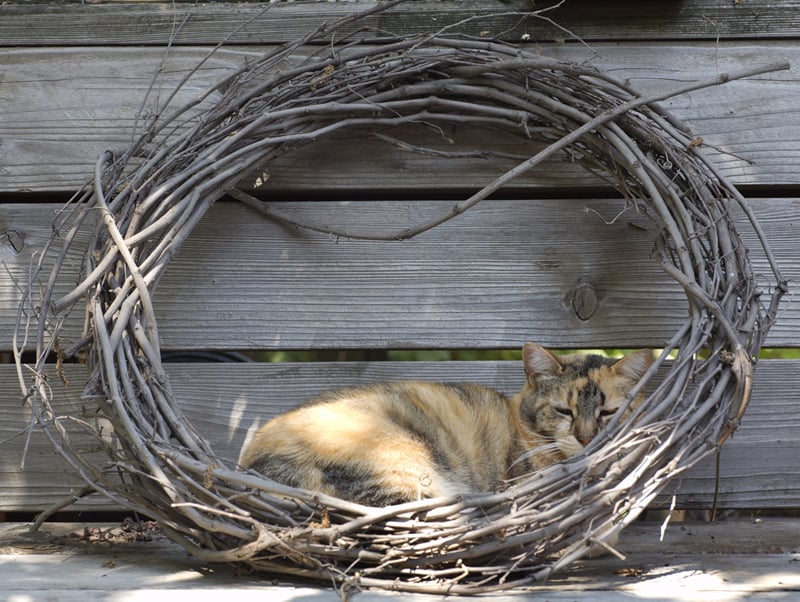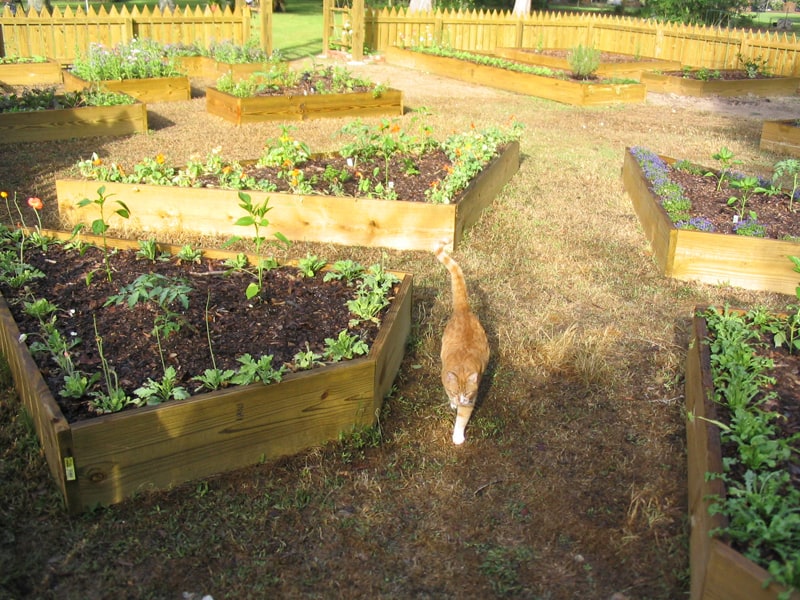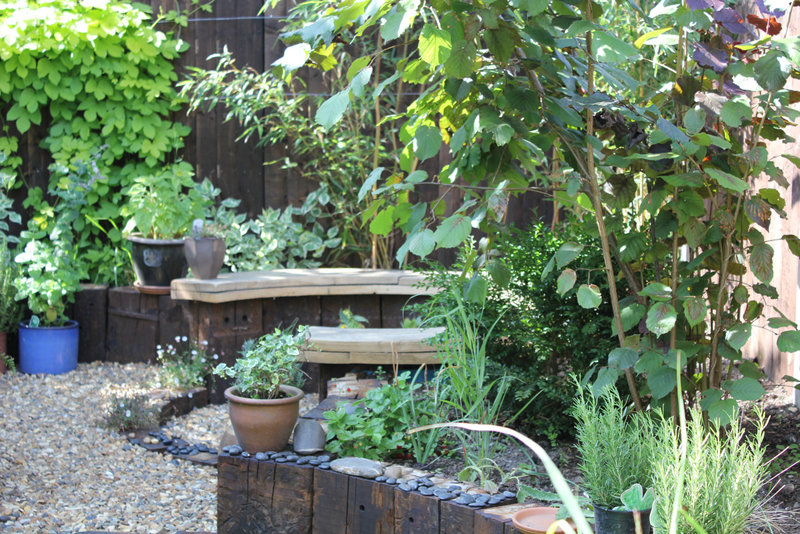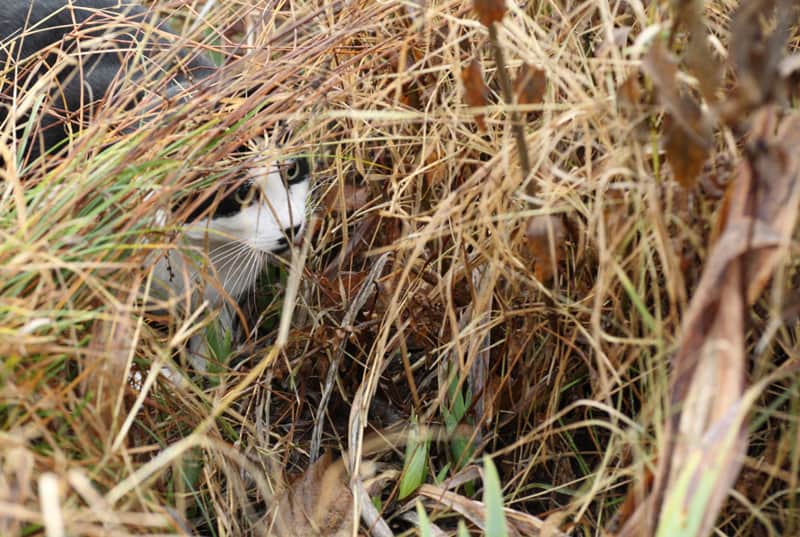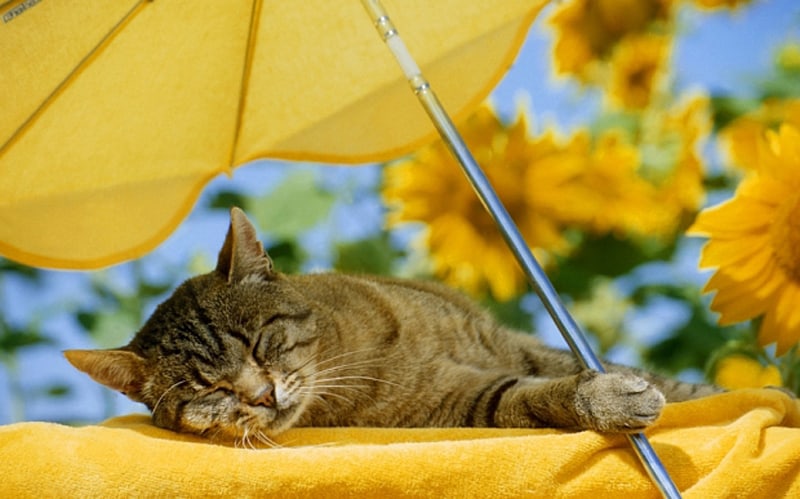It is not difficult to create a cat paradise in your back yard or balcony. Giving your cat outdoor access is good, but only if the outdoor environment is inviting to your pet. By making a few simple, inexpensive changes to your garden, you can create a cat-friendly haven for your pet. Your cat is less likely to venture beyond the garden to neighboring gardens or across roads if you employ these techniques. (You can also view: 15 Cool Modern Homes for Cool Cats )
A guide to creating a haven for your feline friends, with advice on what to plant and what to avoid. Take a look at our top tips below.
Choose plants carefully
Cats are usually quite selective about what they eat, but to be on the safe side, keep plants and flowers that may harm your cat out of your garden. For example, lilies are toxic to cats. Plant hard-wearing shrubs in borders and install delicate plants in pots to avoid them getting trampled by your cat. Provide an area of grass – cats nibble grass to help them bring up hairballs.
1. Good Plants
When it comes to populating your garden, there are good plants and bad plants. Cat-safe plants include sunflower, bamboo, rose, violet, lavender and snapdragon and there are some herbs which are also fine for your cat. These include mint, sage, parsley, dill, rosemary, basil and tarragon and they’re believed to have a positive effect on your cat’s health if eaten. This is one of the first ways to create a cat friendly garden.
2. Bad plants
There are some plants to avoid and although cats will instinctively stay away from plants which they know are bad for them, it’s better to be safe than sorry as they can be very harmful to cats if unwittingly ingested. Lilies and foxgloves can cause kidney damage to your cats and other plants which are harmful include marigold, oak, peony, wisteria, rhododendron, buttercup, crocus and daffodil. Be careful with house plants too such as poinsettia, mistletoe and holly, which are also poisonous to cats.
3. Avoid chemicals
Be wary of using garden chemicals as many will be harmful to your pet. For example, slug pellets are toxic to cats. Use organic, cat-friendly alternatives.

4. Adventure playground
How about creating a fun adventure playground for your cat? Cats love to climb and they will use just about anything made of wood as a scratching post. To protect your trees and keep your cat happy, install vertical logs of varying heights for your cat to climb on. Cats love to roam and clamber through bushes and hedges, hiding in nooks and crannies, so the more interesting you make your garden, the more fun they will have. Cats also like to perch up high to survey their territory so provide a high spot that they can easily access. A high perch could also be the perfect place for them to bask when the sun is shining.Plant areas where your cat can hide and shelter from the summer sun and create hidden areas by planting heathers and lavenders together so they can snoop and prowl and pretend they’re in the wild!
5. Secure your cat
Cat safety precautions should be one of the most important steps to take. Cats are very curious animals and can go outside your garden, can run away for a few days, and not even come back. If this happens, it is important that your cat is equipped with a cat tracker and is always in your sight. This way, if your pet escapes from your garden, you can open the app on your smartphone and see the geolocation of your cat.
6. Soft landings
My cats are acrobats, or should I say acrocats, and I love nothing more than to watch them do backflips and jumps to rival any olympic gymnast. It’s therefore essential to have soft floors so they can have a soft landing. Grass is great as is a layer of bark but do not use cocoa bean mulches as they’re highly poisonous to both cats and dogs.
Hiding places
Your cat will feel more secure in your garden if you provide places for him to hide. Large plant pots work well. If there are lots of other cats in the neighbourhood, hiding spots will make your cat feel safer when they are exploring their territory.
6. Catnip
We all know that cats go crazy for catnip. It’s also known as nepeta or catmint and is a member of the mint family. This plant contains an essential oil which has a euphoric effect on cats and makes them super happy. So if you want a super happy (and super high) cat, plant some in your garden where cats can chew on it, roll around in it and lie in it at their leisure.
7. Garden products
Be careful when purchasing products to treat your garden. Most are pet friendly but it is worth double checking. For example, slug pellets are a hazard and can be toxic if ingested by your kitty. If you do have a slug problem, try ferrous phosphate pellets.
8. Cat toys
Cat toys needn’t just be used inside the house. Attach toys to pieces of string and dot them about the garden. When the wind blows, the toys are sure to keep your cat entertained. Tie cat toys to low handing branches for hours of fun. These will move in the breeze and give your feline friend hours of entertainment as they chase the toys again and again. If you have logs, cover them in sisal rope as they will make great scratching posts and will save your trees from cat clawing too.
9. Provide shelter
Large shrubs, trees or garden umbrellas can provide the perfect shelter for your cat. Offering shade will ensure your cat won’t overheat in the warm summer months and will protect pets that are vulnerable to skin cancer, such as white cats or cats with pink noses and ears. Shelter also gives cats something to hide under when it’s raining and should encourage older cats to enter the garden if they have somewhere safe to relax.
10. Deter neighbouring cats
Cats are territorial creatures and the presence of other cats in the garden can be a source of conflict. They may even put your cat off spending time in the garden. A strip of plastic mesh at the top of your fence will deter the neighbour’s cat. It should also discourage your cat from leaving your garden.

These are just a few ways to create a safe adventure playground for your kitty. Do you have any other ideas?


